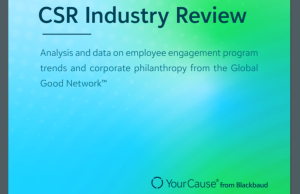Your employee benefits can make or break your nonprofit’s employee compensation package. Health, wellness and retirement benefits play an important role in employees’ decisions about where to work.
“A thoughtful approach to employee benefits that involves your team members will help your nonprofit recruit and retain great people,” said Melanie Lockwood Herman, executive director of the Nonprofit Risk Management Center in Leesburg, Virginia, which recently created a website with free HR and risk materials for nonprofits, including a guide to how to choose and administer employee benefits.
Here are five tips to take some of the stress out of selecting employee benefits and make the process work better for you and your team.
Establish your benefits objective.
What do you most need your benefits program to accomplish? Consider your size, location, mission and values. A sample objective might be: “To offer a competitive employee benefits program that addresses employees’ needs for paid time off and protection against the risks of aging, illness, and death.”
Understand which benefits your employees most value.
Do a needs assessment to figure out the best selection of benefits. Incorporate employee interviews or surveys, including demographic information. Prioritize the things employees identify as essential. Ask your benefits broker or providers for data on how many employees use existing benefits. Explore all retirement plan options — nonprofits can offer 403(b) plans or 401(k) plans, contribute to employees’ individual retirement accounts, and more.
Use all the data at your disposal.
Rank the benefits in order of importance to employees, assess the cost, and decide what you can do. Consider hidden costs like administrative fees. Factor in how much employees will need to contribute and determine whether you need third-party help to administer the benefits or plan.
Communicate, communicate, communicate.
Share with employees how you used their feedback to craft your benefits offerings. Make sure to remind staff about the value of the benefits they receive. Consider sharing an annual “total rewards summary” that shows the complete value of compensation and benefits.
Keep getting better.
Develop goals and metrics to evaluate the success of your benefits program and help identify any needed changes.
With care and consideration, your benefits package can become one of your organization’s strengths and a key piece of your recruitment and retention approach, rather than a headache.










